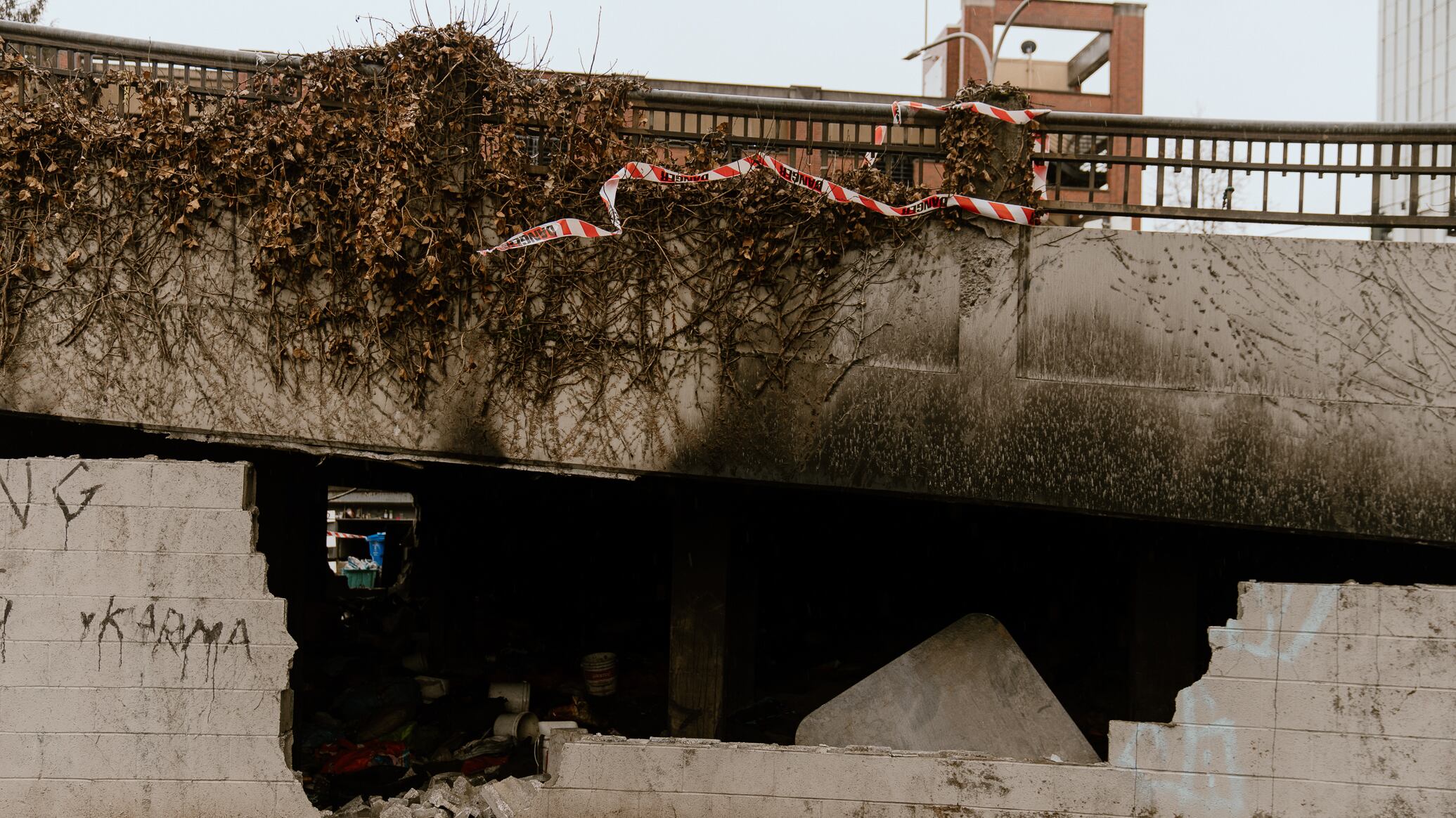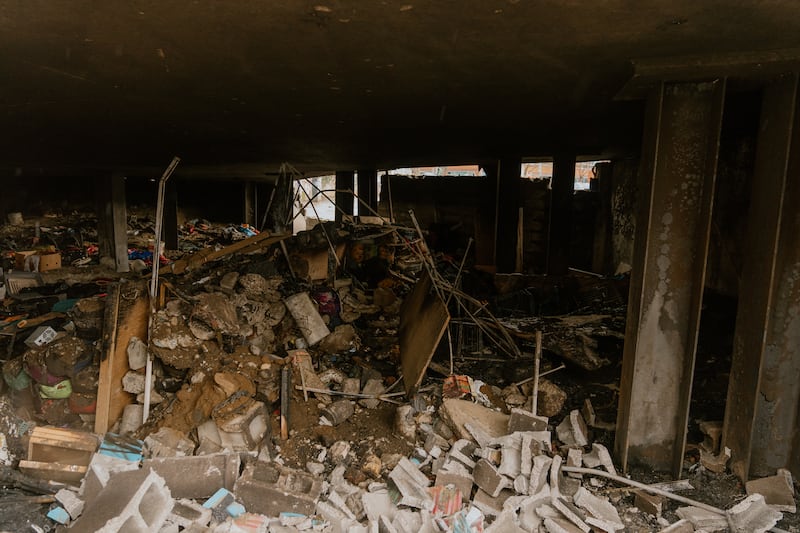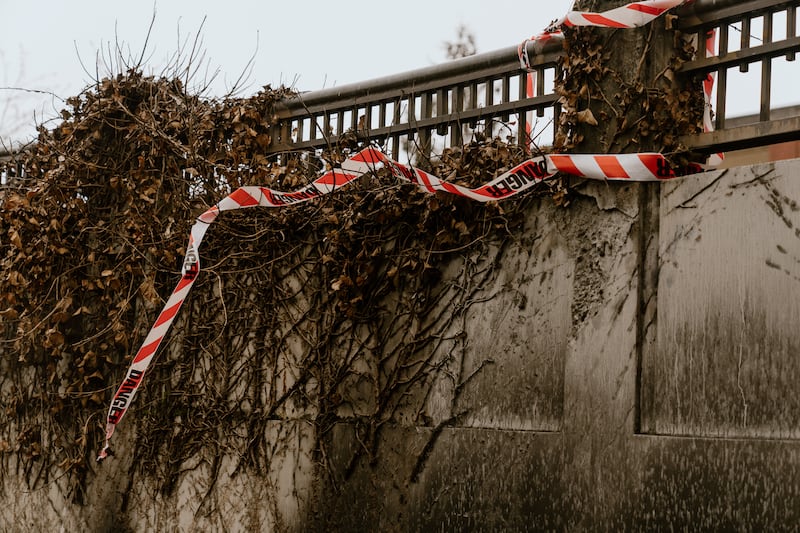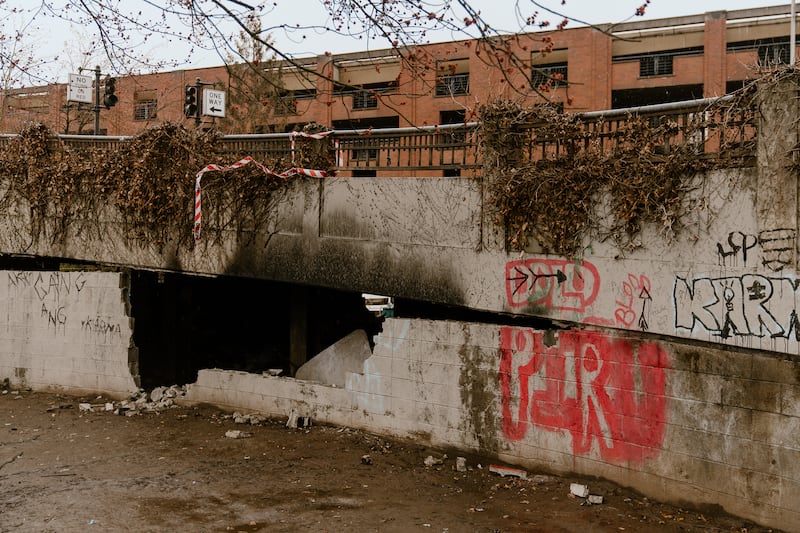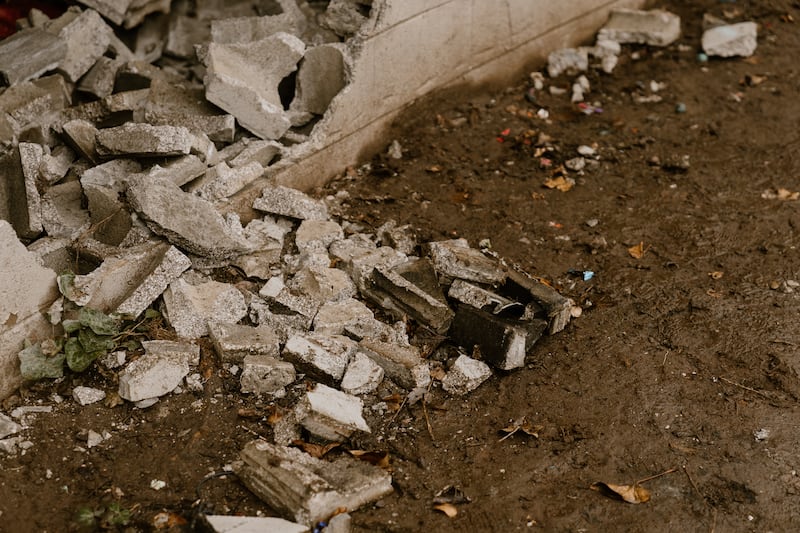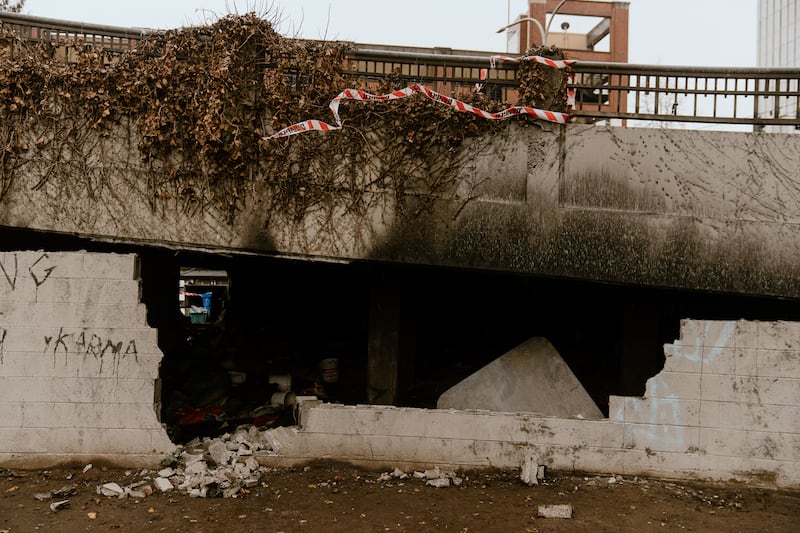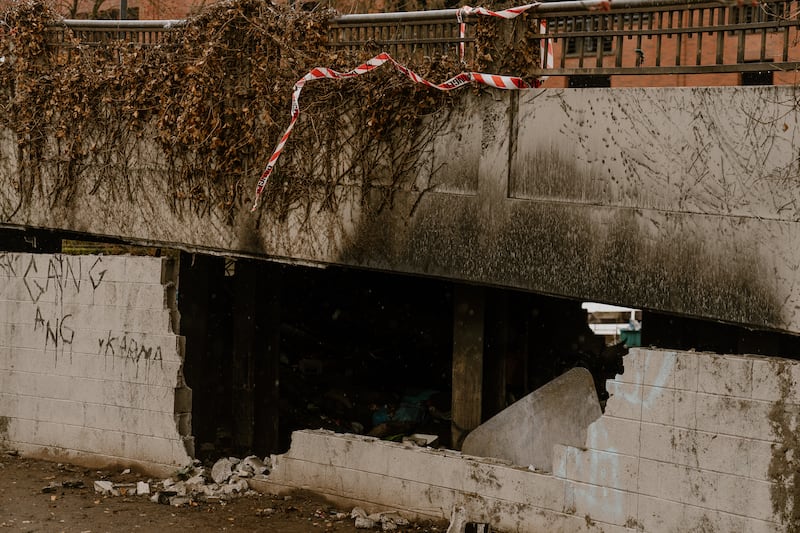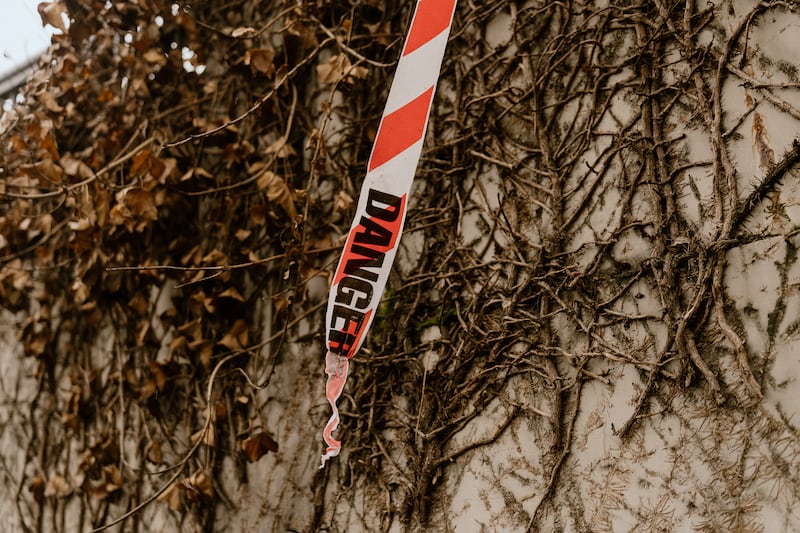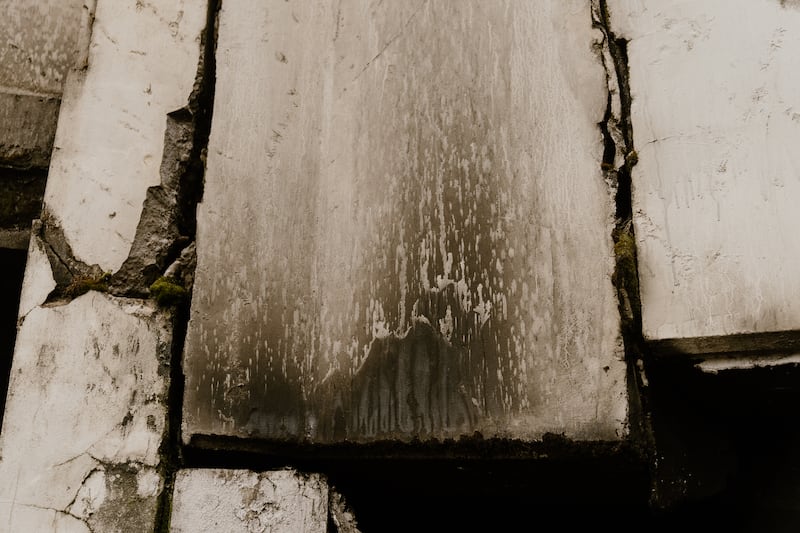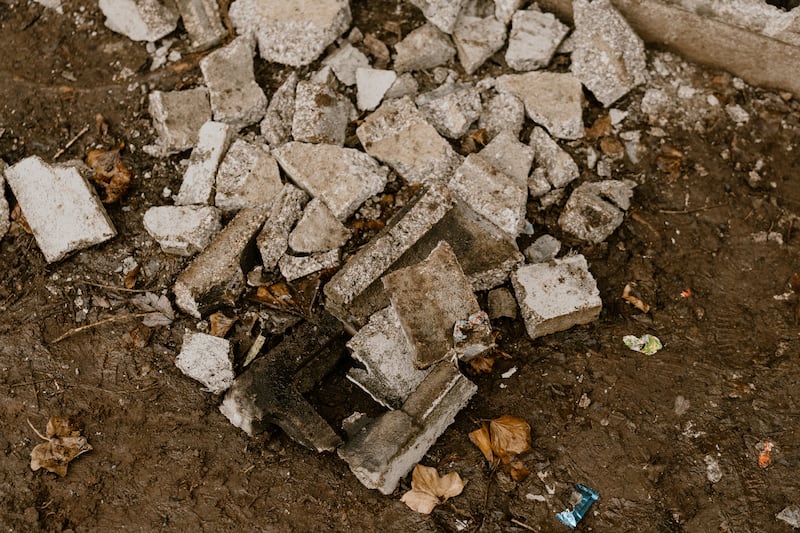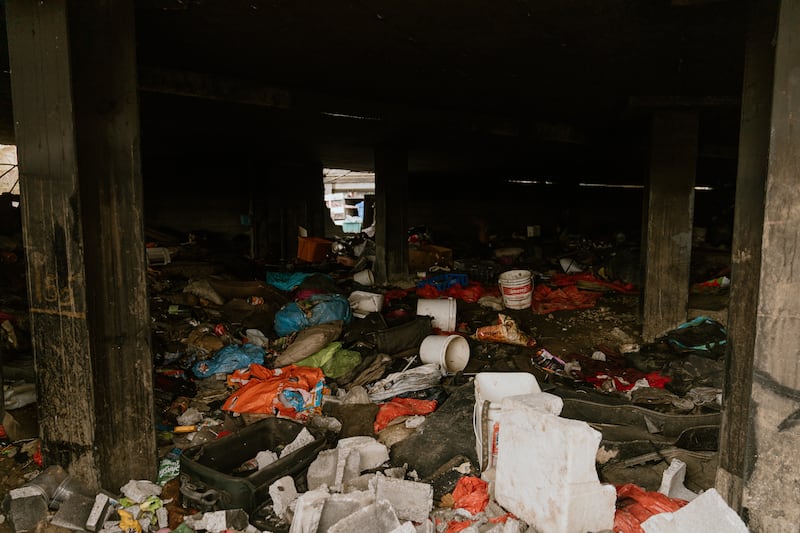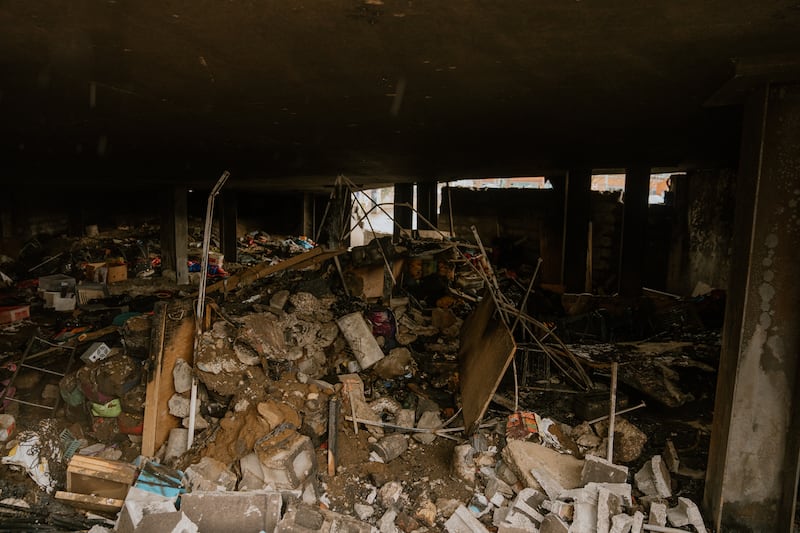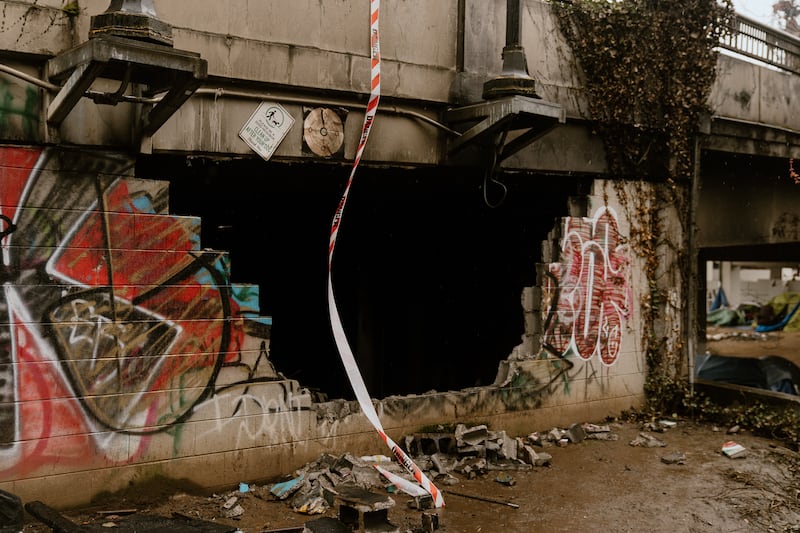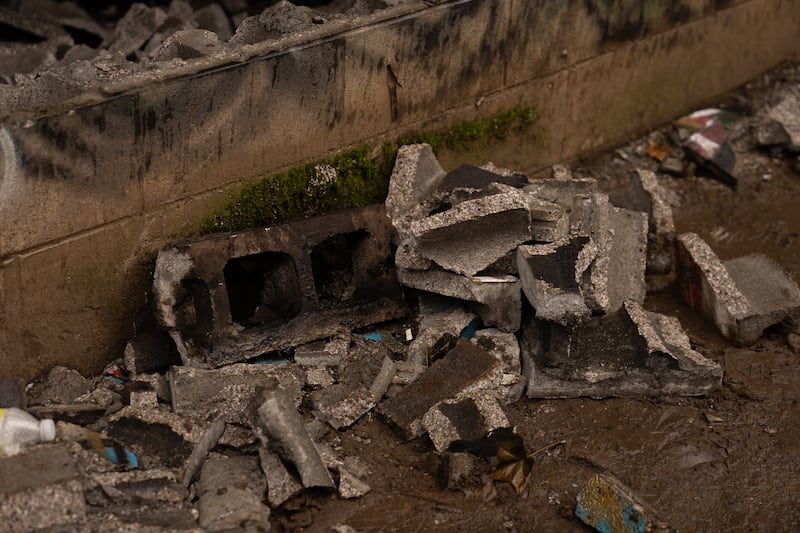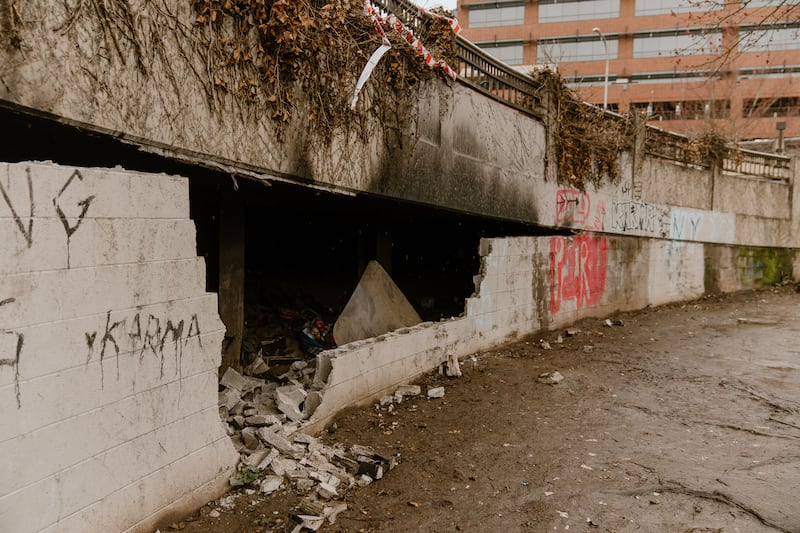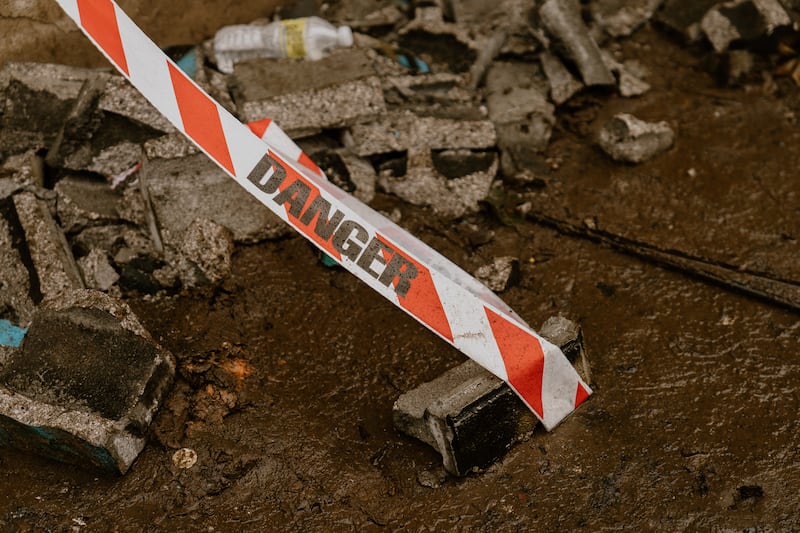Two days ago, a homeless person nearly suffocated in a cinder block chamber beneath a Steel Bridge on-ramp after a fire filled the space with thick smoke.
The chamber, constructed on city property in the 1980s as part of a TriMet line extension, appears to have been built to keep people out. Instead, it trapped a victim inside as flames consumed what Portland Fire & Rescue called a “permanent living space.”
Late Wednesday, firefighters used sledgehammers to break three large holes in the cinder block wall as smoke poured out of cracks in it. Rick Graves, a spokesman for the bureau, said firefighters found a victim, unresponsive, inside. The person was hospitalized for smoke inhalation.
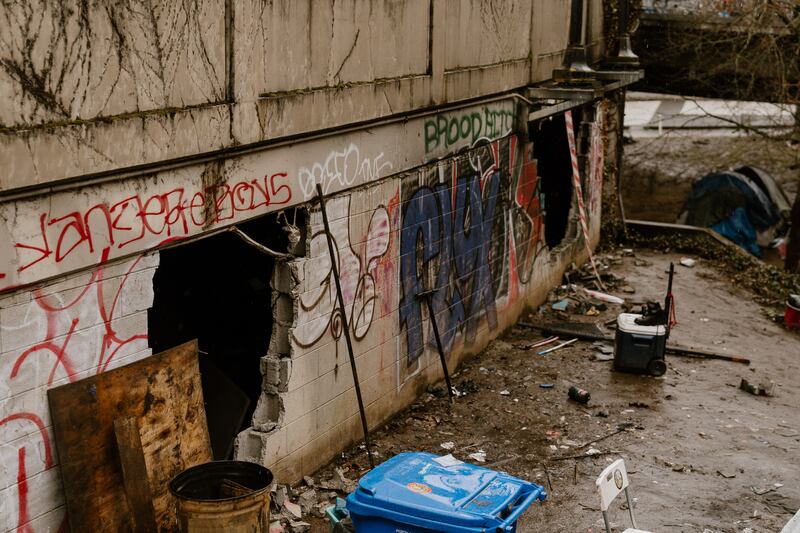
People camping nearby tell WW they did not know who the person was or how they got inside. There are gaps between the wall, the roadway above, and soil below—but none appears large enough to crawl through.
Portland Bureau of Transportation crews are clearing the charred remains of the encampment in preparation for inspectors to assess the damage to the ramp, a process that is expected to continue over the weekend. The on-ramp to the Steel Bridge remains closed.
On Thursday, remnants of a life lived on the streets were scattered across the dirt. There was no apparent evidence that the space was being used for any official purpose.
That morning, WW began inquiring with state and local agencies about when and why the area beneath the on-ramp was walled off with cinder blocks.
In the mid-1980s, the ramps on both sides of the Steel Bridge were rebuilt in preparation for TriMet’s new MAX Blue Line. The cinder block walls showed up in the project’s planning materials, PBOT spokesman Dylan Rivera tells WW.
“Without doing archival research, we are unable to speak to why the walls were built,” he adds.
0 of 22
The sheltered area underneath the Steel Bridge’s spidering west-bank on-ramps has long been a favored location for homeless Portlanders to set up tents and, therefore, a lightning rod for controversy. (This is the first known instance of someone living inside the sealed-off chamber, however.)
In 2016, then-Mayor Charlie Hales swept a 60-person tent encampment from under the bridge weeks after announcing a new “experimental” plan to legalize outdoor camping in specific locations across the city.
Seven years later, the city is still trying to find a policy balance. The first of six large-scale contractor-run camps will open this summer in a Southeast Portland parking lot, Mayor Ted Wheeler announced yesterday.
The number of unsheltered people in Multnomah County has risen 62% over those seven years, from 1,887 in 2015 to 3,057 in 2022.
The fire comes amid intense debate over the city’s methods to curtail fires in homeless camps.
City Commissioner Rene Gonzalez, who oversees the fire bureau, recently stopped crews from handing out tarps and tents to homeless Portlanders, saying he wanted to reduce fuel for fires. (Two consecutive Portland City Council hearings have been interrupted by advocates decrying that policy.)
“Everything about this incident is a crisis & unsustainable,” he wrote Thursday on Twitter.
